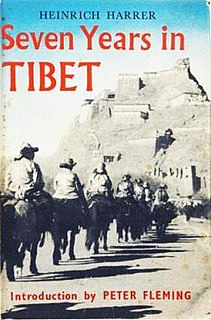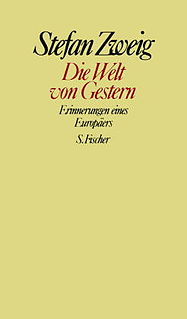 W
WAtlas of an Anxious Man is a 2012 book by the Austrian writer Christoph Ransmayr. It consists of 70 texts with impressions from different places in the world, each beginning with the words "I saw".
 W
WThe Codex Millenarius is an ancient book, containing all four Gospels in Latin. Believed to have been written around 800 at Mondsee Abbey, it is housed in the great library of Kremsmünster Abbey in Austria, which contains other items of paramount religious and cultural value, such as the Tassilo Chalice.
 W
WThe Duino Elegies are a collection of ten elegies written by the Bohemian-Austrian poet Rainer Maria Rilke (1875–1926). Rilke, who is "widely recognized as one of the most lyrically intense German-language poets", began writing the elegies in 1912 while a guest of Princess Marie von Thurn und Taxis (1855–1934) at Duino Castle, near Trieste on the Adriatic Sea. The poems, 859 lines long in total, were dedicated to the Princess upon their publication in 1923. During this ten-year period, the elegies languished incomplete for long stretches of time as Rilke suffered frequently from severe depression—some of which was caused by the events of World War I and being conscripted into military service. Aside from brief episodes of writing in 1913 and 1915, Rilke did not return to the work until a few years after the war ended. With a sudden, renewed inspiration—writing in a frantic pace he described as a "boundless storm, a hurricane of the spirit"—he completed the collection in February 1922 while staying at Château de Muzot in Veyras, in Switzerland's Rhone Valley. After their publication in 1923 and Rilke's death in 1926, the Duino Elegies were quickly recognized by critics and scholars as his most important work.
 W
WFünf Minuten Amerika is a 1931 travel book by the Austrian writer Felix Salten, depicting his tour of 1930 in the United States of America. This is his second travel book, following his account of Palestine, Neue Menschen auf alter Erde, of 1925. Salten himself considered these two books to be his foremost.
 W
WThe Hidden Face is a book on St. Thérèse of Lisieux by the German author Ida Friederike Görres. Originally written in German in 1944 as Das Verborgene Antlitz it is considered the most important work by Görres.
 W
WMarie Antoinette: The Portrait of an Average Woman is a 1932 biography of the French queen Marie Antoinette by Austrian writer Stefan Zweig.
 W
WSeven Years in Tibet: My Life Before, During and After is an autobiographical travel book written by Austrian mountaineer Heinrich Harrer based on his real life experiences in Tibet between 1944 and 1951 during the Second World War and the interim period before the Communist Chinese People's Liberation Army invaded Tibet in 1950.
 W
WThe Sonnets to Orpheus are a cycle of 55 sonnets written in 1922 by the Bohemian-Austrian poet Rainer Maria Rilke (1875–1926). It was first published the following year. Rilke, who is "widely recognized as one of the most lyrically intense German-language poets," wrote the cycle in a period of three weeks experiencing what he described a "savage creative storm." Inspired by the news of the death of Wera Ouckama Knoop (1900–1919), a playmate of Rilke's daughter Ruth, he dedicated them as a memorial, or Grab-Mal, to her memory.
 W
WWhat I Saw: Reports from Berlin, 1920-1933 is a book of reportage by the writer Joseph Roth from the era of the Weimar Republic. The selection of pieces from Roth's large journalistic output was made by Michael Bienert and published in German in 1996. The English translation with the present title was made by Michael Hofmann and appeared in 2003. The pieces in the book "record the violent social and political paroxysms that constantly threatened to undo the fragile democracy" of those years, but some of them also report on more prosaic aspects of life in Berlin in those years, such as the public parks and the rising entertainment industry.
 W
WThe World of Yesterday: Memories of a European is the memoir of Austrian writer Stefan Zweig. It has been called the most famous book on the Habsburg Empire. He started writing it in 1934 when, anticipating Anschluss and Nazi persecution, he uprooted himself from Austria to England and later to Brazil. He posted the manuscript, typed by his second wife Lotte Altmann, to the publisher the day before they both committed suicide in February 1942. The book was first published in Stockholm (1942), as Die Welt von Gestern. It was first published in English in April 1943 by Viking Press. In 2011, Plunkett Lake Press reissued it in eBook form. In 2013, the University of Nebraska Press published a translation by the noted British translator Anthea Bell.